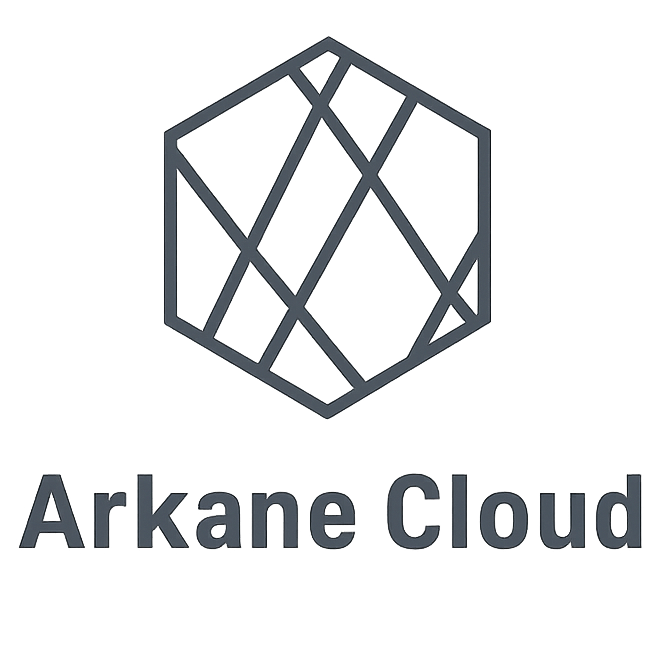GPU Rental for High-Performance Computing (HPC) Workloads

Introduction to High-Performance Computing (HPC) and GPU Evolution
High-performance computing (HPC) has evolved dramatically over the years, significantly influenced by the evolution of Graphics Processing Units (GPUs). Historically, HPC was primarily the domain of scientific researchers and engineers, but its applications have expanded far beyond these fields. With the growth of data centers in size and complexity, there’s been an increasing need for more powerful technology and better management practices, making HPC relevant in various sectors including transaction processing.
The inception of GPUs marked a pivotal moment in computing. Introduced by NVIDIA as GeForce 256 in 1999, GPUs were initially dedicated processors for real-time graphics, an application demanding considerable floating-point arithmetic and high memory bandwidth. Their architecture was optimized for math-heavy computations, such as graphics transformation, lighting, and triangle clipping, essential for rendering three-dimensional spaces.
As real-time graphics advanced, GPUs became programmable, a significant leap that broadened their application scope. The combination of programmability and powerful floating-point performance made GPUs attractive for running scientific applications. This adaptability of GPUs was further enhanced with the introduction of CUDA in 2006 by NVIDIA. CUDA, a parallel computing platform and programming model, revolutionized GPU use by enabling efficient utilization of their parallel compute engines. It allowed developers to partition complex problems into smaller, independent tasks that could be processed simultaneously, thereby drastically improving computational efficiency and speed.
GPUs have since become foundational to artificial intelligence (AI), enabling breakthroughs in machine learning and deep learning. Their ability to perform parallel processing of large data sets has been instrumental in advancing technologies such as autonomous driving and facial recognition, which require processing vast amounts of data at high speeds. The inclusion and utilization of GPUs have thus been a game-changer for AI, overcoming the limitations of slower, less accurate computational methods previously employed.
In summary, the evolution of GPUs from specialized graphics processors to versatile computing powerhouses has been integral to the advancement of HPC. Their ability to process large volumes of data quickly and efficiently has opened up new possibilities across various fields, making them indispensable in today’s high-performance computing landscape.
The Rising Demand for GPU Rental in HPC
The landscape of High-Performance Computing (HPC) is witnessing a significant shift, with the increasing demand for GPU rental becoming a prominent trend. This surge is primarily fueled by the rapid advancement and adoption of Generative AI and Large Language Models (LLMs), which require substantial computational resources. The resulting ‘GPU Squeeze’ — a shortage in GPU availability — has catapulted the demand for these processors to new heights, impacting both cloud-based and on-premises GPU resources.
This demand is not a recent phenomenon but has been building up over the past few years. For instance, GPUs running in the cloud for Natural Language Processing (NLP) workloads were already in high demand a few years ago. The rise of Generative AI has only intensified this, leading to a significant increase in the need for these powerful processors.
In response to the GPU Squeeze, companies and individuals are turning to GPU rental as a viable solution. With tens of thousands of systems on backorder due to the unavailability of high-end GPUs like the NVIDIA H100, alternative approaches are being sought. For example, newer CPUs, such as Intel’s Max Xeon CPUs with embedded HBM2 memory, are being considered for certain HPC workloads traditionally serviced by GPUs. This shift indicates a growing acceptance and exploration of diverse hardware options beyond the conventional NVIDIA GPUs, including products from Intel and AMD.
However, the solution is not one-size-fits-all. The choice of GPU rental or alternatives depends heavily on the specific use case. For many learning and inferencing tasks, processors like the Xeon Gen 4 or Intel’s Gaudi 2 and Datacenter GPU Max Series are emerging as viable alternatives. These developments reflect a broader trend in the HPC industry, where the hardware choice is increasingly dictated by the specific computational requirements of the task at hand, rather than a default preference for a particular brand or type of GPU.
In conclusion, the rising demand for GPU rental in HPC is a multifaceted trend shaped by the rapid advancements in AI and the corresponding computational needs. This demand is reshaping the HPC landscape, with a growing emphasis on finding the right hardware solutions — whether through GPU rental or alternative processors — tailored to specific use cases.
Understanding GPU Rental for HPC Workloads
GPU rental services for high-performance computing (HPC) have become a vital resource for various industries, particularly with the exponential growth in demand for machine learning, deep learning, and AI inference applications. These services provide access to powerful GPUs on a rental basis, catering to the needs of data science, machine learning, and other GPU-intensive HPC tasks.
Key Features of GPU Rental Services
Range of GPUs Available: GPU rental services offer a wide range of industry-leading GPUs, including NVIDIA’s H100 and A100 to A40 and A6000 series. These GPUs are specifically designed for HPC and are available in numerous locations worldwide for instant, on-demand access. This variety ensures that users can select the GPU that best fits their specific computational needs.
On-Demand and Reservation Options: Most services provide GPUs for immediate rental (on-demand) and also allow for reservation of resources for future growth. This flexibility is crucial for organizations planning their computational needs in advance, ensuring they have the necessary resources when required.
Global Availability: Cutting-edge GPUs are available globally, catering to a diverse range of customers and their geographical needs. This worldwide accessibility ensures that users in different regions can benefit from the high processing power of these GPUs without geographical limitations.
HPC Systems Integration: GPU rental services are integrated with HPC systems, offering high processing power, faster storage, and memory resources. This integration allows for more efficient processing of large data sets and accelerates computations, especially beneficial for AI applications and large-scale experiments.
Heterogeneous Computing: The majority of HPC systems enable parallel processing by combining multiple processors and memory modules. GPUs and CPUs are used together in a heterogeneous computing approach, allowing for serial and parallel processing of information, which is essential for complex HPC tasks.
Cost-Effectiveness: GPU rental services offer a cost-effective solution for HPC tasks. Users can avoid the significant upfront costs associated with purchasing high-end GPUs and pay according to their actual usage, which is particularly beneficial for organizations with varying computational demands.
In summary, GPU rental services for HPC provide a flexible, cost-effective, and globally accessible solution to meet the growing computational demands in various fields. With a range of GPUs available for on-demand use or reservation, these services are enabling organizations to tackle complex HPC workloads efficiently and effectively.
Benefits of GPU Rental for HPC Workloads
The benefits of GPU rental for high-performance computing (HPC) workloads are multifaceted, addressing the unique needs and challenges faced by organizations and individuals in various computing-intensive fields.
Cost Advantages
One of the primary benefits of renting GPUs for HPC is cost-effectiveness. Purchasing GPUs can be prohibitively expensive, with prices ranging from a few hundred to over $30,000 per unit. Renting GPUs circumvents the need for a substantial initial investment, enabling access to high-performance computing resources without the upfront cost. Additionally, rental services mitigate the risks of rapid depreciation in value, a common issue with purchased GPUs, as well as the ongoing costs of maintenance, energy consumption, and upgrades associated with ownership.
Flexibility and Scalability
GPU rental offers unparalleled flexibility and scalability to cater to varying workload demands. Users can start and stop services as needed and adjust their configurations, adding memory and performance capabilities to their technology stack. This scalability is particularly beneficial for projects with fluctuating or unpredictable requirements, allowing users to rent high-performance GPU hardware for short periods, thereby aligning costs with actual usage. The ability to test different GPUs without long-term commitments is ideal for small-scale projects or experiments, providing a practical ‘matchmaking’ service between project requirements and technological capabilities.
Access to Advanced Technology
Renting GPUs allows access to the latest technology without the burden of owning and maintaining it. With the rapid pace of technological advancement, GPU rental ensures that users can stay up-to-date with the latest trends and technologies. This access is not limited to standard offerings but extends to GPUs with unique characteristics, such as special processor configurations or multiple cards in one system. As new GPUs are released, users can seamlessly transition to newer models, ensuring their systems remain relevant and efficient.
Future-proofing Systems
The dynamic nature of technology markets means that what is cutting-edge today may become obsolete tomorrow. Renting GPUs provides a way to future-proof systems, eliminating the need for extensive research and the risks associated with purchasing complex equipment. Rental companies often distill vast amounts of information into easily digestible formats, simplifying the decision-making process. This approach not only saves time but also ensures that users have access to the most suitable GPUs for their specific needs, without the financial and operational burdens of owning outdated technology.
Challenges and Considerations in GPU Rental for HPC
When considering GPU rental for high-performance computing (HPC), it’s essential to be aware of the challenges and considerations that can impact the effectiveness and efficiency of these services.
GPU Squeeze and Availability
One of the primary challenges in the GPU rental market for HPC is the so-called “GPU Squeeze.” This phenomenon is characterized by a shortage in the availability of high-end GPUs, such as NVIDIA’s H100 series. This shortage is due to the rapidly increasing demand for GPUs, particularly for Generative AI and Large Language Models, leading to tens of thousands of systems being on backorder. This shortage has necessitated the exploration of alternative solutions, such as Intel Max Xeon CPUs and GPUs from other vendors like AMD, which can still effectively service HPC workloads. It’s crucial for organizations to consider these alternatives and potentially adapt their computing strategies accordingly.
Data Security Concerns
Data security is another major concern in the GPU rental market, especially when data is stored and processed on the cloud. There is an inherent risk of unauthorized access, data loss, and cyberattacks. According to a report by Snyk, around 80% of enterprises experienced at least one cloud security incident in 2021. Therefore, ensuring that GPU rental providers have robust security measures in place is critical to protect sensitive data and maintain compliance with data protection regulations.
Market Dynamics and Economic Factors
The GPU as a Service market is influenced by various factors, including increased competition, technological advancements, and changing consumer behavior. The rapid pace of technological change can pose a challenge, as businesses struggle to keep up with new trends and tools. Additionally, the market is impacted by economic factors such as inflation, exchange rates, and consumer spending. These dynamics can affect the demand and pricing of GPU rental services, making it important for users to stay informed and adapt their strategies accordingly.
Regulatory Challenges
The market is also subject to a range of regulations and restrictions, particularly concerning data privacy and online advertising. Navigating these legal requirements can be challenging, and failure to comply can result in penalties. As such, organizations must be aware of the legal landscape surrounding GPU rental and cloud computing to ensure their operations are compliant.
Emerging Markets and Industry Consolidation
The growth of emerging markets, particularly in Asia and Africa, presents both opportunities and challenges. These markets offer significant growth potential but require businesses to adapt their strategies to local languages, cultures, and consumer preferences. Furthermore, the trend towards industry consolidation in the GPU as a Service market means that smaller businesses may struggle to compete against larger rivals, potentially impacting the diversity and accessibility of GPU rental options.
Case Studies: Success Stories in GPU Rental for HPC
The utilization of GPU rental services for high-performance computing (HPC) workloads has led to several success stories across various industries. These case studies illustrate the practical applications and advantages of leveraging GPU rental in solving complex computational problems.
Accelerator Compatibility and Configuration
A client during the launch of the Nvidia A100 faced challenges with accelerator compatibility while installing and configuring TensorFlow and PyTorch. Through GPU rental services, they received assistance in resolving these compatibility issues, ensuring the smooth functioning of their deep learning frameworks.
Enhancing Deep Learning Capabilities
Another instance involved a client requiring additional computing capacities for deep learning tasks. The rental of high-performance GPUs led to model optimization and almost double acceleration in processing speed. This enhancement significantly improved the efficiency of their deep learning operations, showcasing the power of GPU rental in boosting computational capabilities.
Containerization System Implementation
The implementation of a containerization system using specially prepared Docker containers as a working environment was another success story. This approach streamlined the client’s workflow, providing a more efficient and organized computing environment. The use of GPU rental in this context facilitated the deployment of a robust containerization system, crucial for modern HPC workloads.
Resolving Distributed Learning Challenges
A client approached with issues in distributed learning across several accelerators. The GPU rental service provided a tailored solution, rectifying the problem and ensuring effective distributed learning. This case highlights the adaptability of GPU rental services in addressing specific technical challenges in HPC environments.
High-throughput Cluster for AI-based Analysis
In an innovative application, a client required a high-throughput cluster to develop an AI-based system for assessing mineral presence on a plot of land. The rental of GPUs facilitated the design and construction of a high-throughput cluster, enabling the client to effectively execute their AI-based analytical tasks.
VDI System Implementation for IT Infrastructure
Another success story involves the implementation of a Virtual Desktop Infrastructure (VDI) system to enhance system security, reduce IT infrastructure maintenance costs, and allow flexible desktop configuration for different tasks. This case underscores the versatility of GPU rental in not only computing-intensive tasks but also in IT infrastructure management.
These case studies exemplify the diverse applications of GPU rental services in HPC, ranging from solving specific technical issues to enhancing overall computational efficiency and infrastructure management. The success stories demonstrate the critical role of GPU rental in various sectors, including AI, deep learning, and IT infrastructure development.



 Jun 24,2024
Jun 24,2024  By Julien Gauthier
By Julien Gauthier